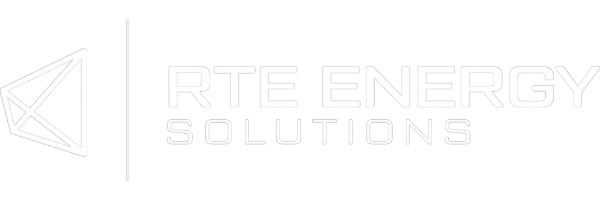Written by Mike Coyle, Vice President of Sales & Marketing
According to research by the World Green Building Council, buildings are responsible for a about 40 percent of all global greenhouse gas (GHG) emissions. Studies have revealed that reducing building emissions is essential if countries are to meet their climate targets. As global warming continues to worsen, it is vital to reduce the impact buildings have on accelerating climate change. By incorporating building optimization strategies, organizations and governments can mitigate the harmful emissions produced by buildings while also creating resilient communities that are better equipped to withstand the impacts of natural disasters.
The impacts of climate change are becoming increasingly evident, with record-breaking temperatures and extreme weather events occurring more frequently. More and more countries, cities, and businesses have declared their commitment to a net-zero emissions future. In 1997, the United Nations' Intergovernmental Panel on Climate Change (IPCC) created an international carbon credit proposal called the Kyoto Protocol which aimed to reduce carbon emissions worldwide.
What are Carbon Credits?
Carbon credits are permits that allow its owners to produce a certain amount of carbon dioxide or greenhouse gases into the air. For example, one carbon credit means the owner of that permit can emit one metric ton of carbon dioxide or equivalent greenhouse gas. The money from buying the credit goes to certified activities that help reduce or remove emissions from the atmosphere. They were created to help reduce emissions and financially incentivize companies since the credits can be sold to other companies.
Why is Existing Building Infrastructure Important?
Every building constructed today has an impact on the environment, but did you know that approximately two-thirds of the global building sector currently in use will still be around in 2040? This means that to ensure sustainability and reduce emissions, not only must we focus on net-zero-aligned construction, but also incorporate existing buildings through energy efficiency upgrades.
Updating existing buildings is an important part of any successful long-term emissions reduction strategy. Energy efficiency solutions like Blue Box Air and BrainBox AI can lower future energy bills, meet rising efficiency standards, and improve property desirability. There are three key areas of particular focus for building updates which include heating, ventilation, and air conditioning systems (HVAC), lighting, and water use.
ESG Goals: What is it and Why Does it Matter?
ESG, which stands for Environmental, Social, and Corporate Governance, has become an increasingly popular topic and a key part of facilities management. ESG is a framework that includes elements such as environmental performance, social responsibility, and corporate governance. These ESG goals help organizations and governments positively impact the environment and community while meeting their other responsibilities. It allows governments and organizations to measure the effectiveness of the existing policies and practices related to the environment, social factors, and corporate governance.
Building optimization strategies can help organizations and governments reach ESG goals by reducing greenhouse gas emissions, attracting and supporting the community, and using data to improve decision-making.
Reducing Emissions
Buildings are one of the largest contributors to global greenhouse gas production, accounting for nearly 40% of total emissions. While this is significant and concerning, it also presents an opportunity to reduce emissions by implementing energy-efficiency technologies. The three influencers in a building include heating, ventilation, and air conditioning systems (HVAC), lighting, and water use.
HVAC is typically the largest energy consumer for most homes and buildings and is a major driver of global energy consumption and carbon emissions. With this in mind, it is extremely important in the HVAC industry to maintain equipment at peak performance levels. Proper maintenance improves energy efficiency and space conditioning for the occupants served.
Read more about HVAC strategies that can improve energy savings performance in this white paper.
Meeting Community Needs
Building optimization methods like HVAC coil cleaning and automation can have a greater impact on our environment than just reducing energy emissions. Not only do they help to reduce greenhouse gas emissions, but they also improve air quality and ventilation for building occupants. Improving air quality helps reduce the risk of airborne diseases and sick-building syndrome. Studies have shown that well-ventilated buildings also lead to improved productivity and cognitive function.
Using Data to Improve Decision Making
Data has become an indispensable tool for leaders looking to make the best decisions for their communities. With the rise of smart building technologies, organizations, and governments have access to better insights than ever before. This can be especially beneficial when it comes to building optimization strategies, which provide comprehensive diagnostics of buildings prior to implementation, as well as pre-and post-solution readings that track progress over time.
Data-driven decision-making helps leaders understand how their ESG goals are being met in real-time and allows them to identify gaps in their current strategy or initiatives that may need improvement. Learn more about how real estate investment advisor GWL Realty Advisors used data mapping, building analysis and AI to achieve greater energy efficiency in its buildings portfolio.
Building Efficiency Opportunities Through Blue Box Air & BrainBox AI
With over 28,000 coils treated, Blue Box Air‘s patented enzyme treatment has consistently been able to deliver significant benefits including:
- Reducing energy consumption and carbon footprint,
- Improving ventilation and indoor air quality,
- Extending equipment life by 3X-4X,
- Restoring equipment back to peak performance,
- No need to turn equipment off/no business interruption.
Using advanced AI technology, BrainBox AI securely connects to your existing HVAC system and optimizes each piece of your equipment within your preset parameters to:
- Reduce energy costs by up to 25%,
- Improve occupant comfort by up to 60%,
- Lower overall maintenance costs,
- Decrease carbon footprint by 20-40%.
About the Author: Meet Mike

As a sales and marketing professional, Mike has spent a career developing effective sales processes, strong leadership skills, and building marketing strategies. The digital landscape has changed the way companies interact with each other and it is imperative for organizations to adapt to that change. He has been involved in several successful B2B ventures working with OEM and IT channel sales customers. In recent years, he was part of the executive team that successfully rebranded and marketed a series of portable electronics devices building the retail sales channel and digital strategy. Book a meeting with Mike.
